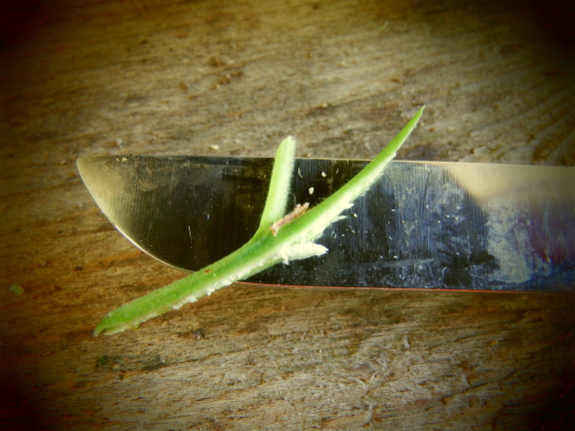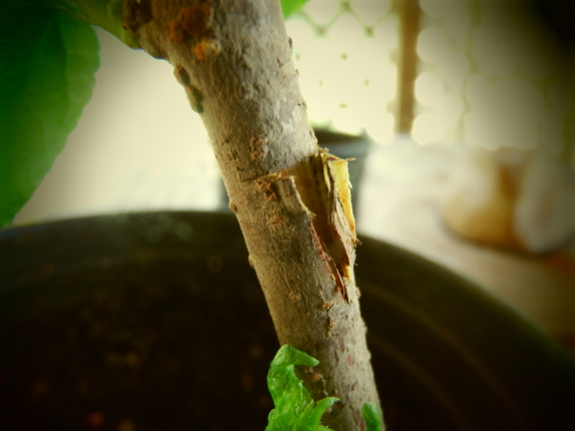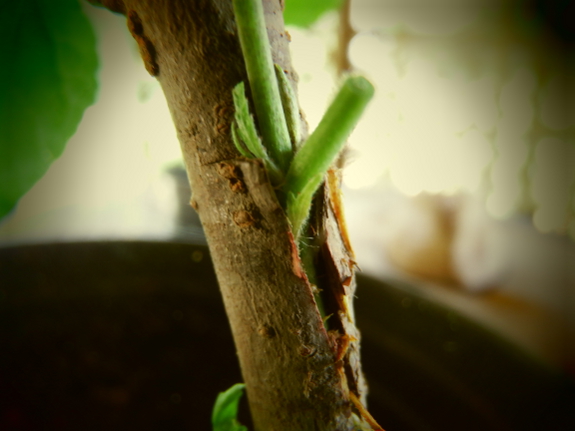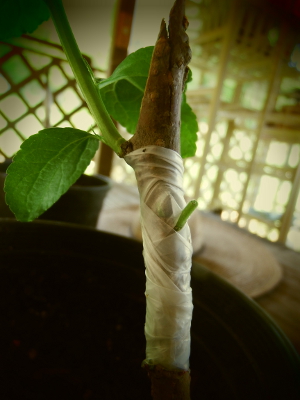
Bud grafting a plum

When grafting during the growing season, most people turn to some permutation of budding
(aka bud grafting). The idea is that you cut a bud off the variety you
prefer, slip the bud into an incision in the bark of the rootstock, let
the wound heal, then bend down the rootstock's top growth to prompt a
new stem to grow out of the transplanted bud. Yes, this technique does
require more TLC than the simple whip-and-tongue grafts used during the
dormant season, but budding is much more successful than dormant
grafting on stone fruits like peaches and plums.
This is my very first
time budding, so I did the deed with book in hand (and without much
confidence). In other words --- who knows if this will work, so do some
research on your own before following my lead!

The first step was to
make a T-shaped incision in the side of the rootstock. You want to cut
down through the cambium (green layer) so the bud can slide all the way
underneath, right up against the wood. I've been told it's easier to do
this step in August, but I was able to pry the cambium up in early May.

Next, I sliced a bud (and
the surrounding wood) off a growing stem on the plum tree I want to
propagate. (See photo at top of this post.) I snipped off the leaf, then
slid the bud down  into the incision on the rootstock.
into the incision on the rootstock.
The top of the scionwood
above the bud is just a handle. So once the bud was in place, I cut the
scionwood off flush with the top of the T incision.
Next, I wrapped the graft
carefully, leaving an opening for the bud to burst through. Now it's
time to wait a month or two (or more?) and then see if I can get the
scionwood bud to grow!
Now I see why the experts recommended that I try dormant grafting my plums.
Sure, my success rate so far using that method has only been 40%
(possibly as high as 80% when all is said and done), but at least I knew
within a month whether the grafts had healed! Patiently keeping an eye
on my budded plum this summer will probably be the hardest part of this
new experiment.
Want more in-depth information? Browse through our books.
Or explore more posts by date or by subject.
About us: Anna Hess and Mark Hamilton spent over a decade living self-sufficiently in the mountains of Virginia before moving north to start over from scratch in the foothills of Ohio. They've experimented with permaculture, no-till gardening, trailersteading, home-based microbusinesses and much more, writing about their adventures in both blogs and books.
Want to be notified when new comments are posted on this page? Click on the RSS button after you add a comment to subscribe to the comment feed, or simply check the box beside "email replies to me" while writing your comment.

Is it a bit early to bud graft? I thought you needed to wait until dormant buds of next season's growth had formed, i.e. summer.
Bud grafting is great, because you get such a clean union. Stem grafts, if not executed perfectly, end up with cracks and bark damage that is at risk for disease and structurally weak.